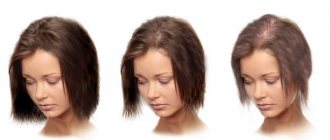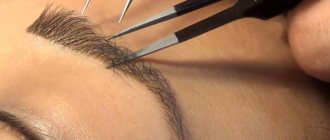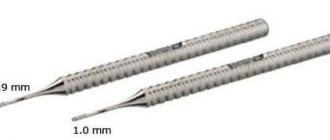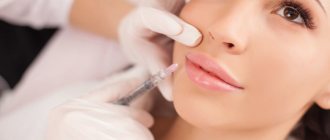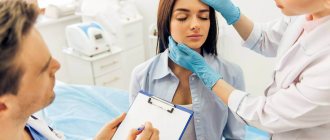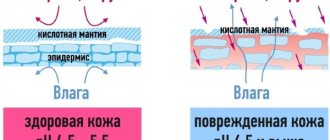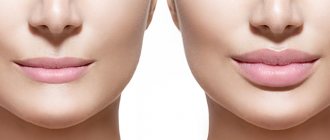Skin grafting is a surgical operation to restore skin on the surfaces of wounds that do not heal during therapeutic treatment. Most often, skin grafting surgery is performed on large affected areas - over 50 cm2. Successful engraftment of the graft ensures an active blood supply, so for pressure ulcers the use of surgery is limited.
Transplantation can be performed:
- Human skin - your own or another person;
- Animal skin;
- Artificial fabrics.
If the skin of the person himself is used, the operation is called autoplasty.
Indications for surgery and techniques used
- In case of burns accompanied by necrosis of the skin and damage to bone tissue, a transplant of one’s own tissue, autoskin, is performed.
- If it is impossible to use one’s own resources, for burns and severe bleeding, an allograft is used - tissue from another person.
- If the burn is clearly limited, then surgery to remove dead tissue and skin grafting can be performed soon after the injury, before inflammatory reactions occur (delayed necrectomy).
- If the patient has a deep burn over a large area, the transplant is performed after the wound has been cleansed and granulation tissue has formed.
Preparation for a shoulder lift:
The brachioplasty operation is performed under general anesthesia, so the patient needs to undergo a number of standard tests: blood and urine tests, ECG, and a visit to the therapist. At the preliminary consultation, the surgeon determines the correction methods, tells where the suture will be located and what results can be expected based on the initial data. On the day of the operation, the patient comes to the clinic on an empty stomach, is given preliminary markings in the ward and escorted to the operating room. Brachioplasty arm lift lasts from 1.5 to 3 hours, depending on the chosen technique.
Free skin grafting
Free tissue transfer surgery is the most effective method for eliminating complex defects after severe injuries.
The following types of operations are carried out:
- Vascularized - using a complex flap of skin that preserves the network of blood vessels for the formation of new capillaries;
- Non-vascularized - using a split flap, when new epithelium forms independently.
This operation can be performed using thin, medium-thickness flaps and full-thickness donor tissue.
Stories from our patients:
Irina Shevchenko05/03/2021
To the best plastic surgeon in Russia!!!!!!!!!!!!!!!!!!!!!!!! I would like to express my deep gratitude to Valery Grigorievich for his professionalism and my beautiful face. She had surgery on September 31, 2020, at the height of Covid19 restrictions. The clinic complies with all the necessary requirements for conducting surgery during Covid19. The operation was VERY SUCCESSFUL. Coming out of anesthesia was easy and not noticeable. My face is getting better and better every day and every month. Also, many thanks to the entire Estet Clinic team, everyone is in their place and all great professionals. Highly recommend!!!!!!
Read moreHide
Yulia29.01.2021
Many thanks to the wonderful doctor Valery Grigorievich! I had rejuvenation surgery in 2021. Several years have passed, nothing has changed, only everything has gotten better! Especially the neck, you have no equal in this! There is no need to wait for quick rehabilitation and quick results! Everything will be great, but in a year... At least in my case, everything is individual! But, you are the best! I hope to meet you again, health permitting!
Read moreHide
Tatyana K.07/17/2020
Thank you very much, Valery Grigorievich! I am so glad that I chose you for my surgery. I look 20-25 years younger now (at 59). I myself did not expect to see such a young face. I am very happy. My husband is surprised that this could happen. He also really likes the result. Many thanks to everyone who helped you - Tatyana Alexandrovna and Anna Sergeevna. Many thanks to the anesthesiologists and nurses. The operation and recovery from anesthesia were very easy for me. Thanks to Alexandra, she has always been and remains in touch. For those visiting the site and reading this review, I can add that the intervention was extensive: forehead endoscopy, SMAS, platysmaplasty and lower blepharoplasty. All this was done in 1 time - clearly, quickly, professionally. Therefore, there were no blue-black bruises at all. On the 3rd day, pale yellow bruises appeared under the eyes (already passing). There was no severe swelling. A week later, I calmly (wearing dark glasses) went out into the street. By now, 2 weeks have passed since the operation. The scarring process is completely painless, it is not visible from the outside. There remains a slight numbness of the chin, neck and forehead. But gradually sensitivity returns. You can feel it too. In general, the rehabilitation process is easy to bear, especially with such an emotional high from SUCH a stunning result. I don’t even want to wear makeup))
Read moreHide
See all photos
Graft collection sites
Donor tissue is taken mainly from the following areas:
- Belly;
- Lateral to the sternum;
- Inner thigh;
- Buttocks;
- Shoulder;
- Front and back of the ear.
The best effect is achieved by layer-by-layer transplantation, which is carried out mainly for skin transplantation on the hand and fingers.
For facial skin defects, donor material is selected from the neck. Skin from the hairy part of the body is not transplanted to areas of the body without hair.
Types of plastic surgery on the body and results
Before the operation begins, each patient must undergo an examination, after which the doctor will be able to choose the type of plastic surgery and the possibility of performing it for a particular patient.
Remember: before the procedure, you should soberly assess the possible risks and consequences. In any case, after the intervention, scars will remain, which over time will turn into white stripes. This applies to direct cuts to the skin, with the exception of thread lifts, as well as hidden incisions in invisible areas of the body.
Plastic surgery to correct the figure is not performed everywhere at once, but only in stages on individual parts of the body.
Each procedure includes several stages:
- Preparation;
- diagnostics;
- consultation;
- operating;
- rehabilitation period.
Read all reviews
How is the operation performed?
- Anesthesia is given.
- Cellophane is applied to the surface of the wound to mark the boundaries of the area and obtain a pattern for donor material.
- A piece of skin of the desired type is cut out.
- The graft is passed through a drum to form the desired thickness.
- A skin flap is applied to the wound, which is in a folded form (to prevent damage to the fibers).
- The edges of the manipulation site are sutured.
The donor surface is processed according to the following algorithm:
- Stopping bleeding;
- Applying a bandage with antimicrobial impregnation;
- Suturing the wound.
If necessary, use a splint or plaster.
Purpose of the procedure
If the contours of the body are far from ideal, then the aesthetic procedure of plastic surgery brings the most significant results in correcting the figure. You can get rid of a double chin, cellulite, or remove “ears” on the hips with just one surgical intervention. In this case, the postoperative period passes without injury or complications, and the person receives a visible result, a beautiful body and self-confidence.
Remember: body plastic surgery of any type is a surgical intervention that requires diagnostics, consultation with a doctor and tests.
Like any other operation, plastic surgery has a number of contraindications:
- smoking and alcohol abuse lead to complications;
- venous and lymphatic disorders;
- oncological diseases;
- diabetes and heart problems;
- pulmonary and liver failure;
- as well as any disease in the acute stage.
Rehabilitation
The period of hospital stay varies from 1 to 2 days. At this time, I observe the patient with the aim of early detection of possible complications and their correction. If healing after plastic surgery proceeds well, the person can be discharged for outpatient follow-up treatment.
At home, for a speedy recovery, I recommend wearing compression sleeves. Do not forget about the temporary limitation of physical activity. In addition, it is necessary to temporarily avoid visiting baths and saunas. This can provoke bleeding or become a trigger for the development of the inflammatory process.
During the recovery period after hand surgery, it is not recommended to drink alcohol. Alcohol contributes to the development of infection, prolongs the time required for tissue regeneration, and negatively affects the condition of the skin. If you have been prescribed a course of antibacterial therapy, drinking strong drinks is strictly prohibited. They are incompatible with medications and may cause a disulfiram-like reaction.
You will be able to evaluate the first results immediately after the arm lift is performed. In the future, their condition will improve due to the disappearance of edema and postoperative hematomas. Hematomas and moderate swelling are a normal reaction of a healthy body to injury and are not considered complications of manipulation. However, they significantly change the appearance of the limbs and make only a preliminary assessment of the changes possible.
Important: To make the achieved results more visual, I save photos of the problem area before and after the procedure. This helps my patients easily compare their previous appearance with their current one and evaluate the positive metamorphosis of their hands that has been achieved.
Brachioplasty is a procedure that allows you to instantly get rid of many complexes and restore a young, fit appearance. Conducted by a competent surgeon, it will help you permanently eliminate age-related changes on one of the most noticeable parts of the body. You will be able to wear open evening dresses again and surprise others with your beautiful appearance. Call to get complete information about brachioplasty and make an appointment with one of Moscow's leading surgeons working in the field of aesthetic medicine.
Hand skin plastic surgery and liposculpture
In the field of lipoplasty, a new procedure has recently appeared - liposculpture. It is a correction of the shape of the upper limbs due to the fact that fat is evenly distributed over the entire surface of the arm. The procedure uses catheters or syringes, which a healthcare professional uses to make small incisions in the skin and remove or inject fat. This type of aesthetic surgery is quite painful, complicated and expensive.
With age, the amount of subcutaneous fat decreases, and people experience such phenomena as skeletonization of the hands. My hands lose their youthful appearance not only due to sagging skin, but also due to the disappearance of subcutaneous fat. In this case, transplantation of your own fat - lipofilling - will help improve the condition of the skin of your hands. This procedure will help eliminate the consequences of unsuccessful liposuction, give your hands youth or remove uneven skin.
Hand skin plastic surgery and liposuction
The upper part of the arm, more precisely, the area from the elbow to the shoulder, can be called a favorite place for the accumulation of fat deposits. In this area, their excess can be removed using liposuction (lipoplasty), if the patient’s weight exceeds the norm by 14 kilograms or more, and the fat deposits on the patient’s upper extremities are uneven. Liposuction alone is not able to overcome the problem of sagging skin of the hands, improving its elasticity and firmness. The procedure is indicated for girls with satisfactory skin tone. Women with loose or sagging skin who are looking to tighten and rejuvenate their arms can expect good results from liposuction combined with brachioplasty.
During the operation, the specialist makes small incisions in the elbow area, from which the fat is pumped out using vacuum and ultrasound. Swelling and bruising may be noticeable for up to three weeks after liposuction, and the recovery period can last up to several months. If a small amount of fat deposits were concentrated under the skin, the skin will recover and come into shape on its own, without further surgical intervention.
Methods
The procedure lasts about 2 hours using general anesthesia. Concomitant interventions most often include liposuction or surgical lifting of other areas. During the work, I excise the folds of skin and fat and tighten the tissue. In this case, the course of the procedure depends solely on the nature of the excess epithelial and adipose tissue.
I recommend eliminating the first degree of soft tissue ptosis through a transaxillary surgical approach. In this case, the seams remain hidden in the armpit. However, more often, to create clear contours, a classic operation is required, including an incision from the elbow to the armpit.
In this case, I provide access in one of two ways:
- S-shaped. Allows you to carry out all the necessary manipulations while maintaining the aesthetics of the intervention.
- Fishtail method. I use this method in case of a large amount of fat and excess skin.
This incision provides optimal surgical access for excision of large soft tissue fragments in the arms.
At the end of the surgical lift, a special suture is placed on the arms using self-absorbable material. This allows you to form a neat and unnoticeable scar in the future, which is very easy to hide from others. There is no need to remove sutures, which may be accompanied by pain. I just cut off the outer knots, the rest of the thread dissolves on its own.
Causes of sagging hand skin
Basically, sagging skin of the hands is explained by age-related changes and general aging of the body. The process of biological aging of the skin starts at the age of 25. Every year, the skin becomes thinner and experiences more profound changes, which include a decrease in the production of new cells, disruption of fat metabolism and protein composition, the development of moisture deficiency, and deterioration of blood microcirculation in the skin capillaries. When melanocytes fail to cope with their functions, pigment spots form on the skin. When fibroblast function is impaired, the skin loses elasticity and firmness due to decreased synthesis of collagen and elastin. She looks rough and lethargic. The formation of folds and wrinkles is activated.
Excessive exposure to the sun is also a common cause of skin aging. Ultraviolet rays promote the formation of free radicals in skin cells, which destroy the cell and lead to its early death. Thus, under the influence of ultraviolet radiation, a layer of dead cells accumulates and subsequent thickening of the skin.
Other factors that negatively affect the condition of the skin are: constant chapping, prolonged exposure to temperature changes, and the use of cosmetics that do not match the skin type. Also, the causes of sagging hand skin can be sudden weight loss, hormonal imbalances or serious illnesses.
Weakening muscle tissue can also contribute to deterioration of the skin of the upper extremities. In the shoulder area, a person has two muscles: biceps and triceps. In everyday life, the biceps are constantly under stress, and the triceps are used only in rare cases, so sagging skin will be primarily noticeable in this area.
Many are convinced that the good or bad condition of the skin of the hands depends on the individual characteristics of a person and is inherited.
What problems can be solved?
Lifting sagging arms involves, first of all, working with the resulting “skin reserves”. The skin on the hands is quite thin, and there is practically no soft tissue underneath it - which is why they lose their aesthetic appearance so quickly. By introducing drugs that stimulate the production of collagen and elastin or by influencing tissues using other methods (laser rays, thermolysis), the process of internal rejuvenation can be started. Contour plastic surgery of the hands is effectively combined with various types of care procedures - nourishing masks and baths, paraffin therapy.
Laser therapy
Laser therapy, or laser resurfacing, is a non-surgical correction of the inner surface of the upper limbs, which visually presents itself as tightening the skin of the arms, and removing pigment spots that appear with age. This procedure has proven itself to be bloodless and virtually painless. This kind of hand plastic surgery is prescribed when the skin that has not lost its elasticity does not sag much, and there is only a moderate amount of excess skin. A laser beam with a certain wavelength removes the surface layer of the skin, at the same time removing wrinkles or age spots, and making the skin more elastic.
The laser reaches the deep layers of the skin, stimulating the cells to produce their own collagen. It allows you to do without radical correction methods. Laser therapy often becomes part of the postoperative recovery period. It helps strengthen the skin and improve its texture. When using laser therapy, the strength of the beams can be adjusted. In addition, the procedure does not require hospitalization or a long recovery period.
For 4-5 days after laser peeling, the skin should be protected from sun exposure using a special ointment. The skin erythema goes away in about 2 weeks. The laser does not leave scars on the skin. Typical contraindications for laser therapy include herpes and skin conditions.
The optimal type of treatment for sagging hand skin is determined by the doctor. Only a medical specialist can correctly determine the nature of the external manifestation of the defect and assess possible contraindications and risks. Rejuvenation and tightening of the skin of the hands will bring quick and desired results if several types of hand skin plastic procedures are carried out simultaneously.

